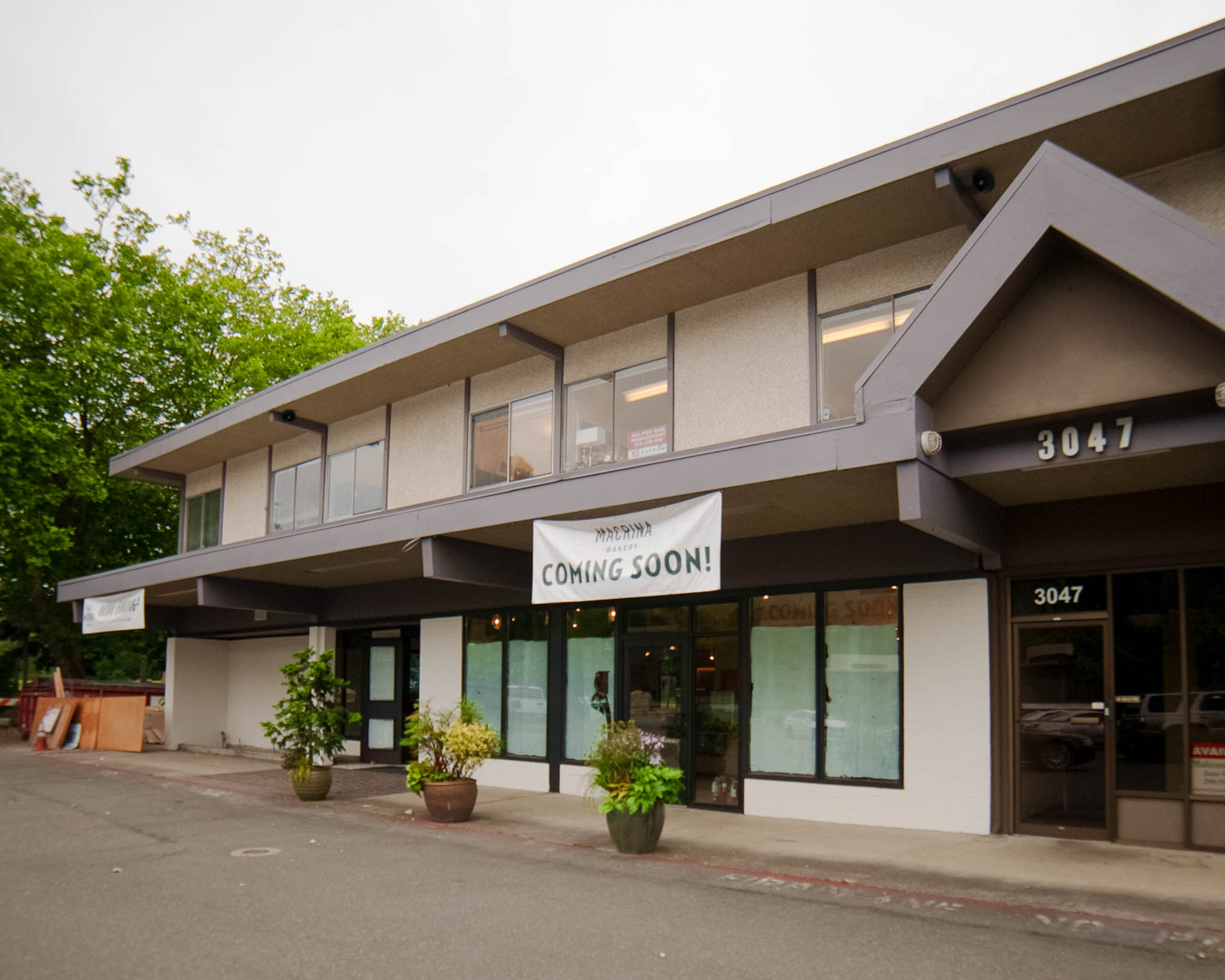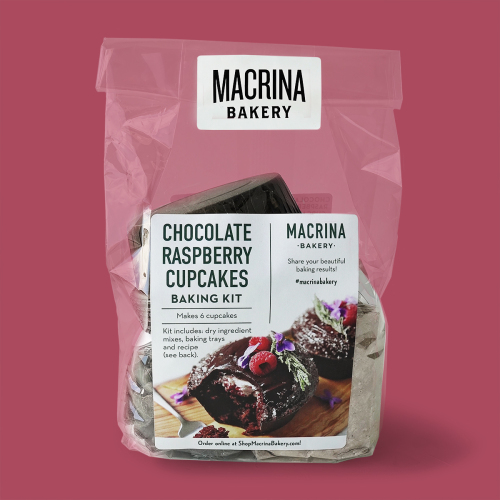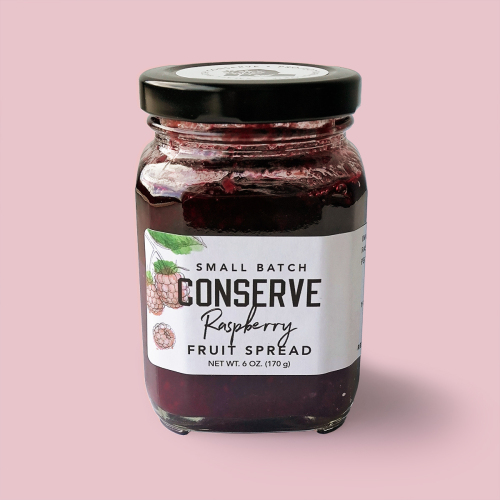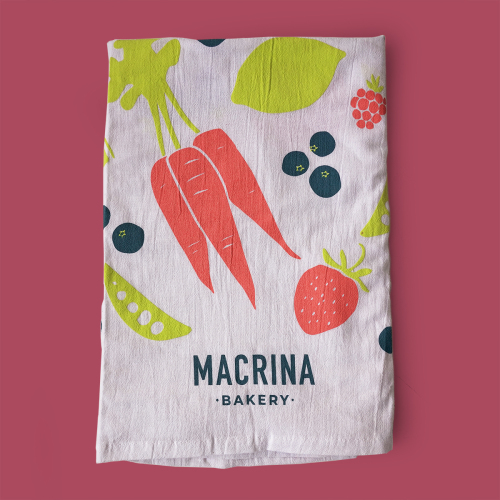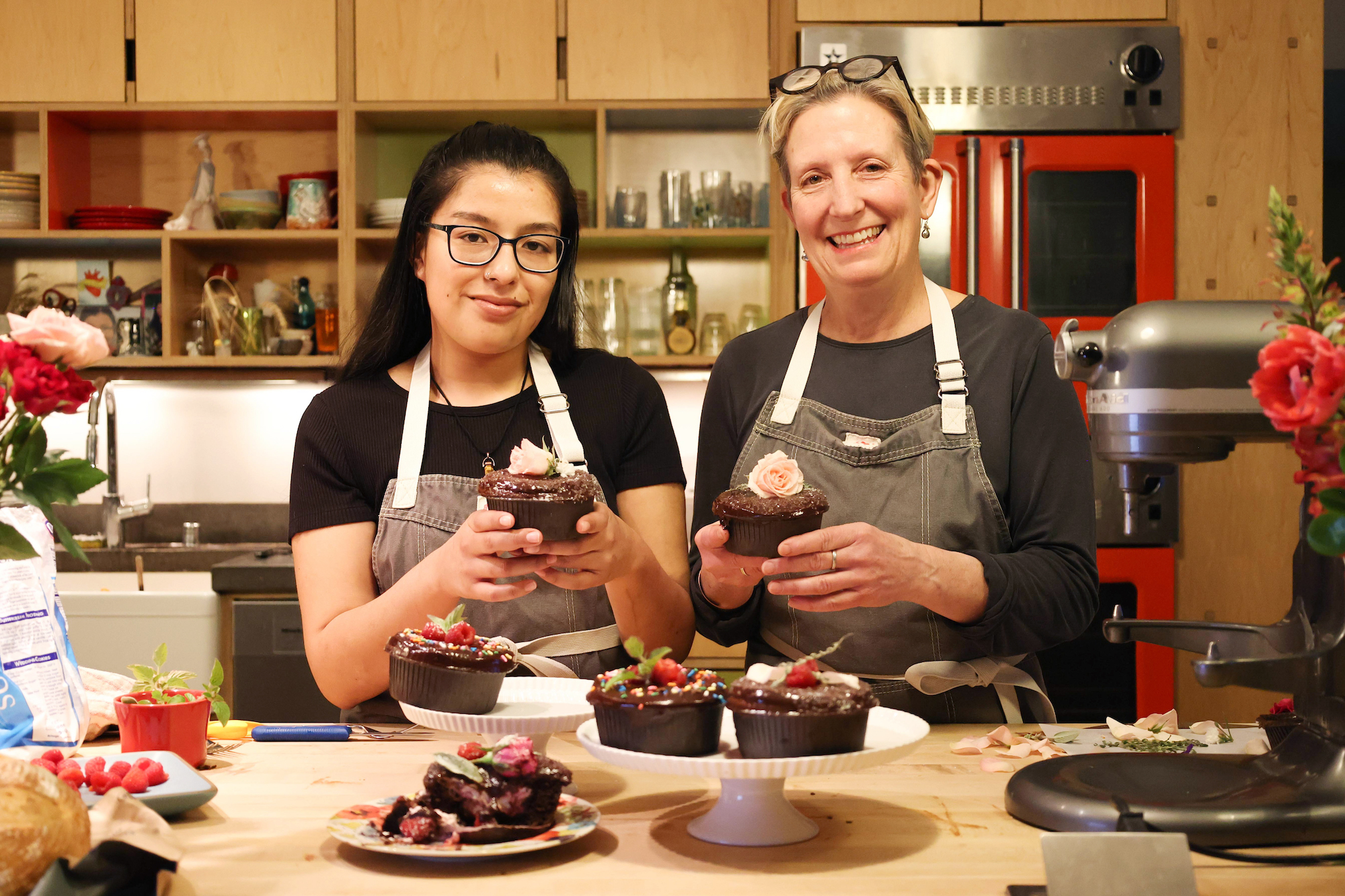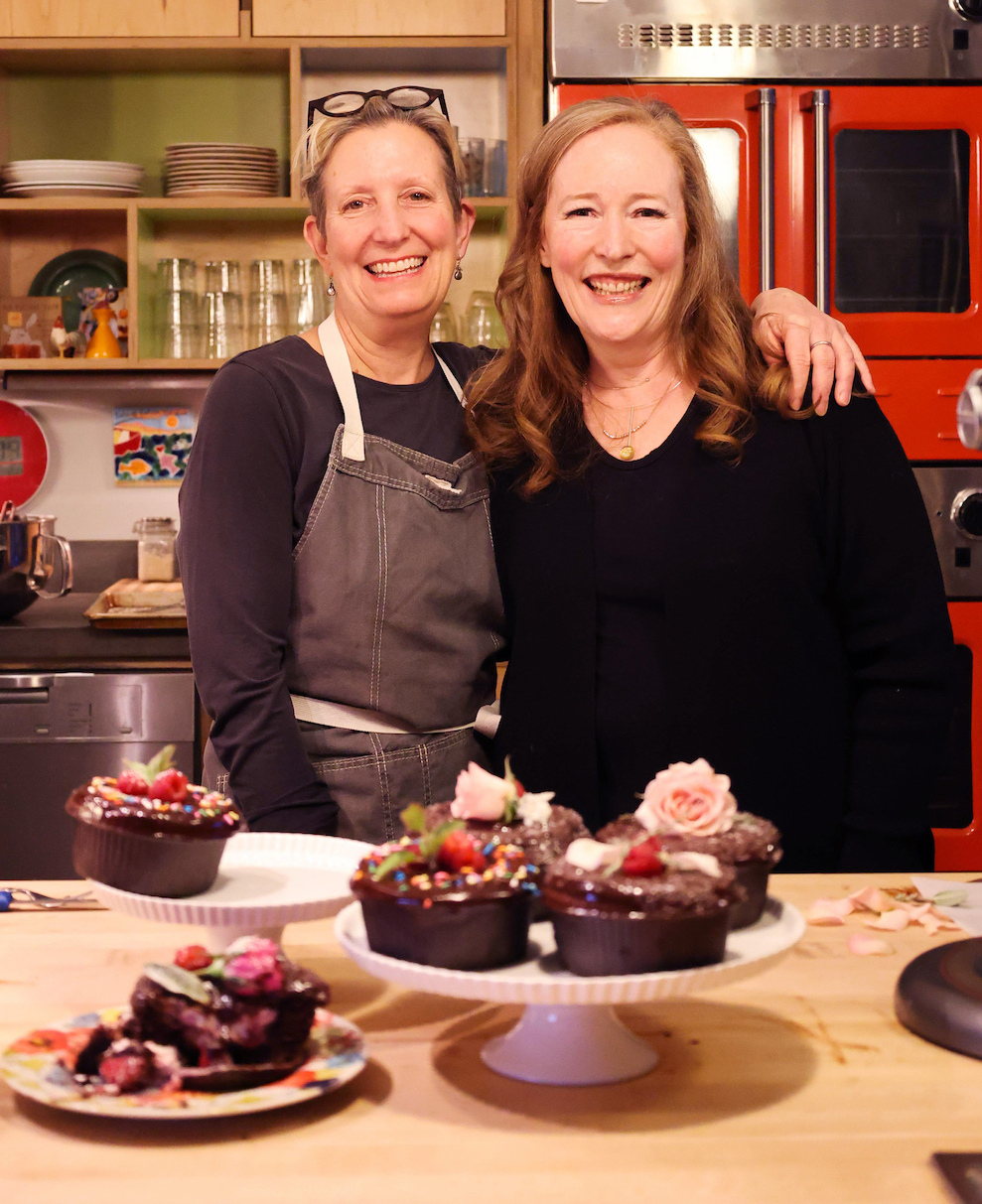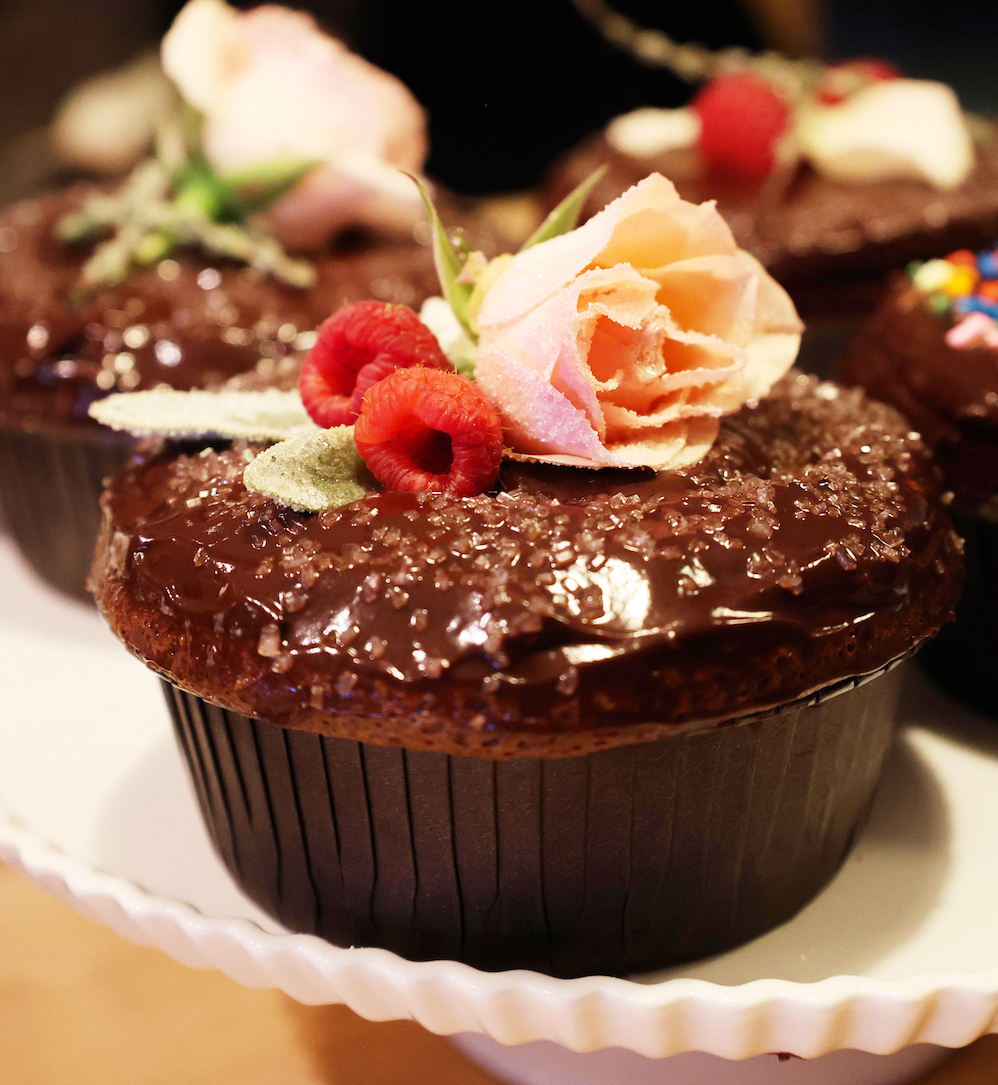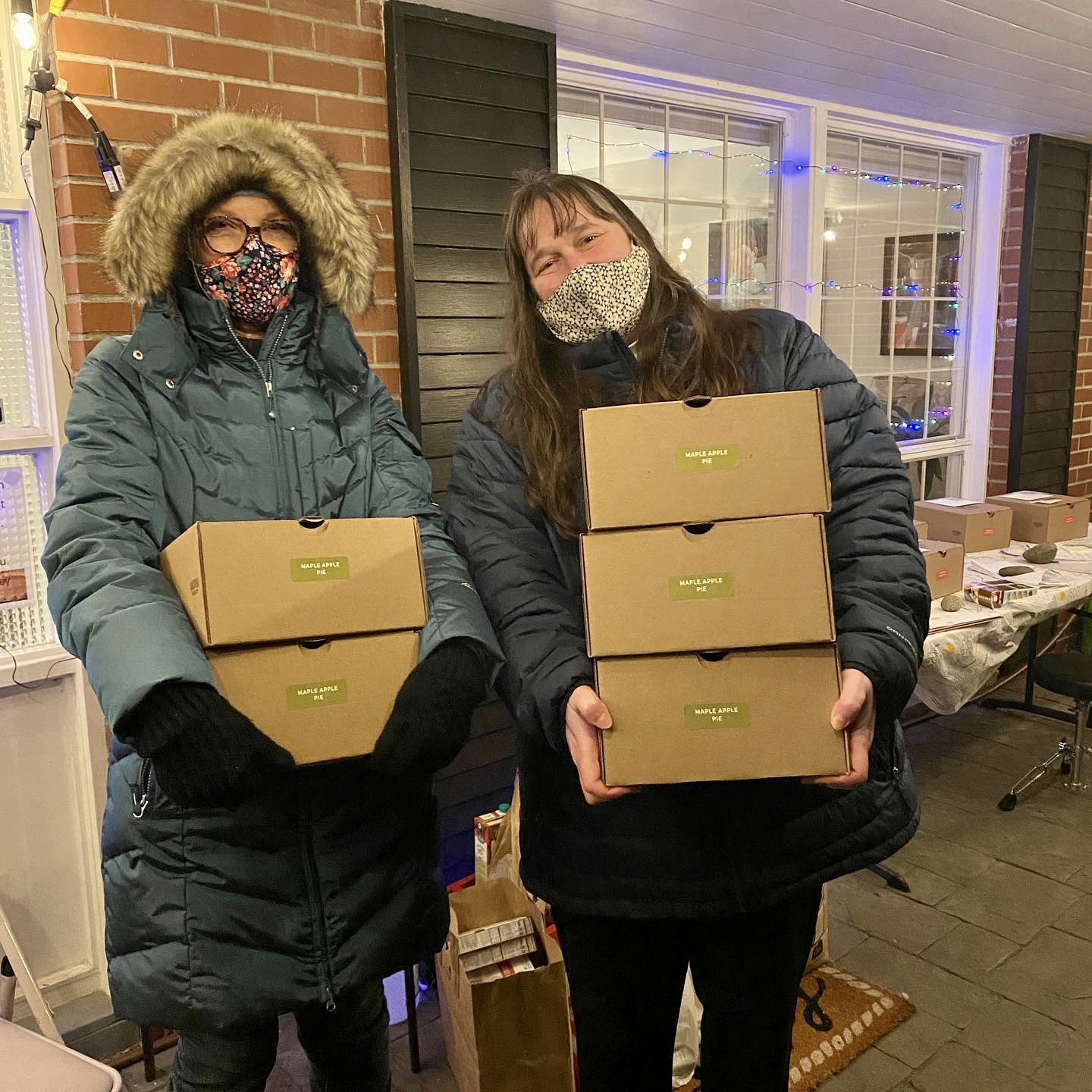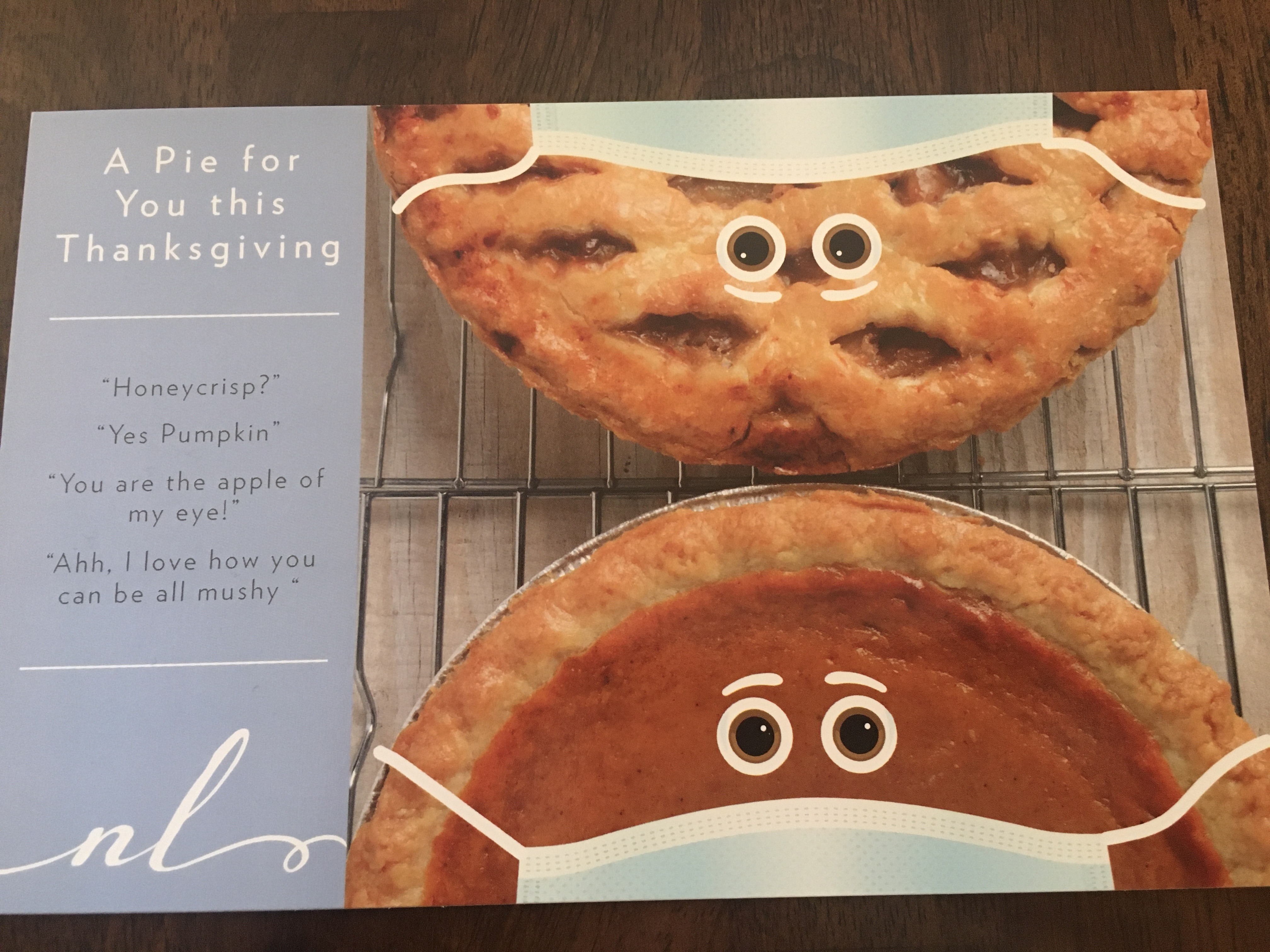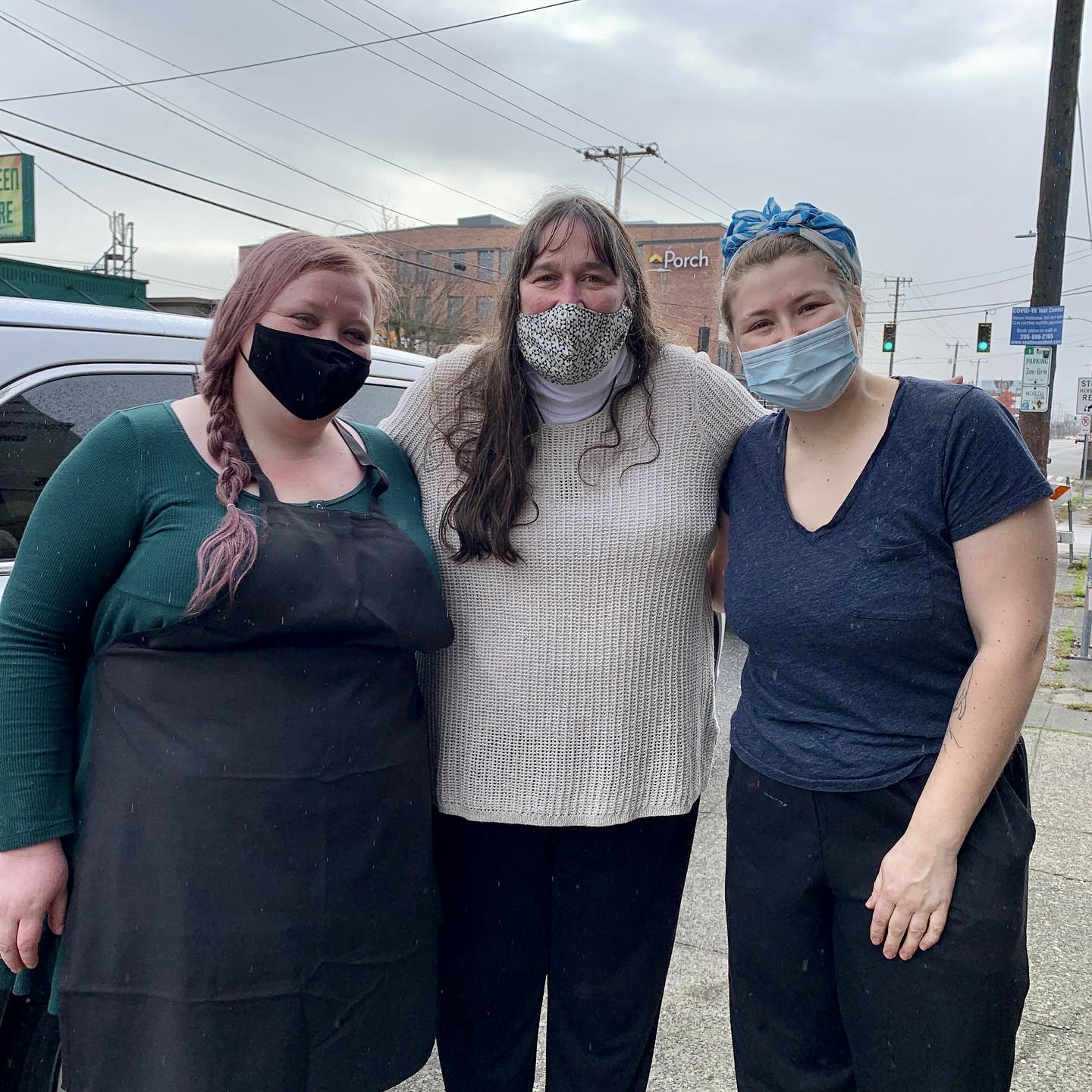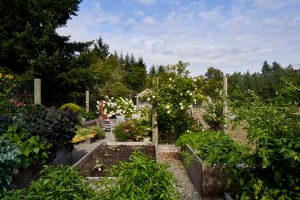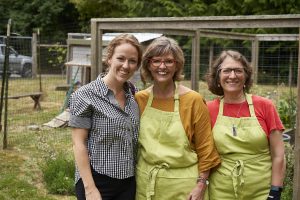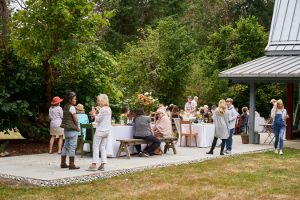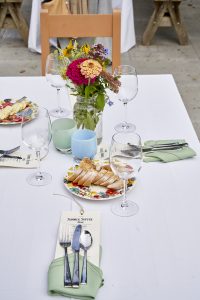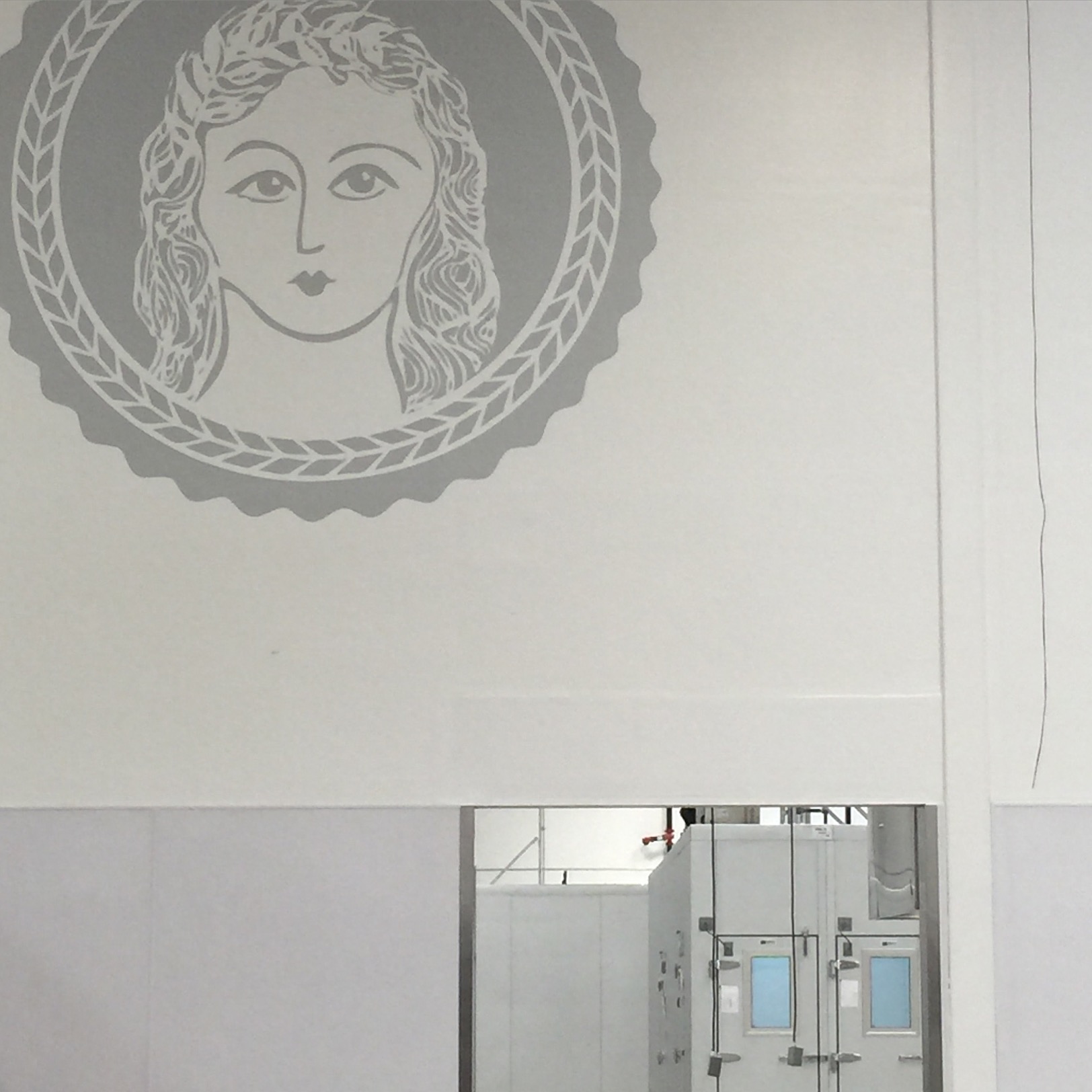
Lady Macrina watching over us all.
Not too long ago, I was working away at our Sodo bakery marveling at how small the space had become. Our team was working shoulder to shoulder, each process a fine-tuned choreography of mixing, forming and baking with counter space at a premium. My mind wandered back to 1993. When I first opened Macrina Bakery, I had six employees, and 847 square feet packed with a French Bongard oven, a stack of convection ovens, one mixer, an espresso machine and steel baker’s racks to cool the bread. I had been dreaming of having such a kitchen for years and here I was producing a full line of artisan breads, muffins, coffee cakes and tarts. Business took off through word of mouth, some very beloved wholesale customers and some very positive reviews. All my energy went into baking. Soon this kitchen was bursting at the seam and after only a year, I leased the adjoining space, enlarged the kitchen and added a cafe. We were able to offer more pastry items, develop some savory dishes and add new breads. It was a time of incredible growth for Macrina.
Eight years later with another cafe open in the Queen Anne neighborhood, production was moved to a larger space on 2nd Avenue. With more space, more ovens and better equipment we were able to organize better and again add items to our line of breads, pastries and savory items. We even improved some old favorites. Business continued to grow. Our cafes were thriving and more and more wholesale customers were added to our family. My crew and I shared great highs and weathered growing pains that tested our collective graciousness.
And soon we needed more space.
In 2008, with new partners, we found an industrial building in the Sodo neighborhood. We doubled our kitchen size, had plenty of parking for delivery vans and space for a cafe that could feature big windows both outside and into the kitchen. There was even space upstairs for administrative offices. I thought we would never fill all the space! The expertise, dedication and experience of my managing partners allowed me to step back from business operations and spend more time in the kitchen. We invested in and learned from our talented staff who are devoted to making the best breads and pastries. We improved ingredients, sourced more local products and services, and added sweet and savory items our customers requested. We increased our delivery area, our cafes were thriving and our growth continued.
Remarkably we outgrew this space quickly.
For the last few years we’ve been bursting at the seams again, forced to find more efficient ways to work within our confines. So, after a year of planning and another 6 months of construction, we have moved again! Our new bakery is in Kent, which I like to refer to as the new Sodo (industrial, up and coming). I am in love with our well thought out bakery, with impressive temperature controls, the tools we need to keep up with demand and enough space for each team to spread out.

The first bake in our new home.
As I was working shoulder to shoulder in our Sodo space that day not too long ago, I was very much looking forward to sharing the new space with my team. Now that we have officially moved in, I am even more excited. I love seeing the smiles on everyone’s faces as they acclimate to their new home. We no longer have to push racks of bread around to get into the walk-in and we aren’t tripping over pallets of flour. I love having the space to create. I am working on a new line of pastries that will blow you away. You will have to stay tuned to see what we have coming later this summer. Trust me it is worth the wait.
I think I speak for all of us when I say we’re very excited about Macrina’s future.
Leslie


